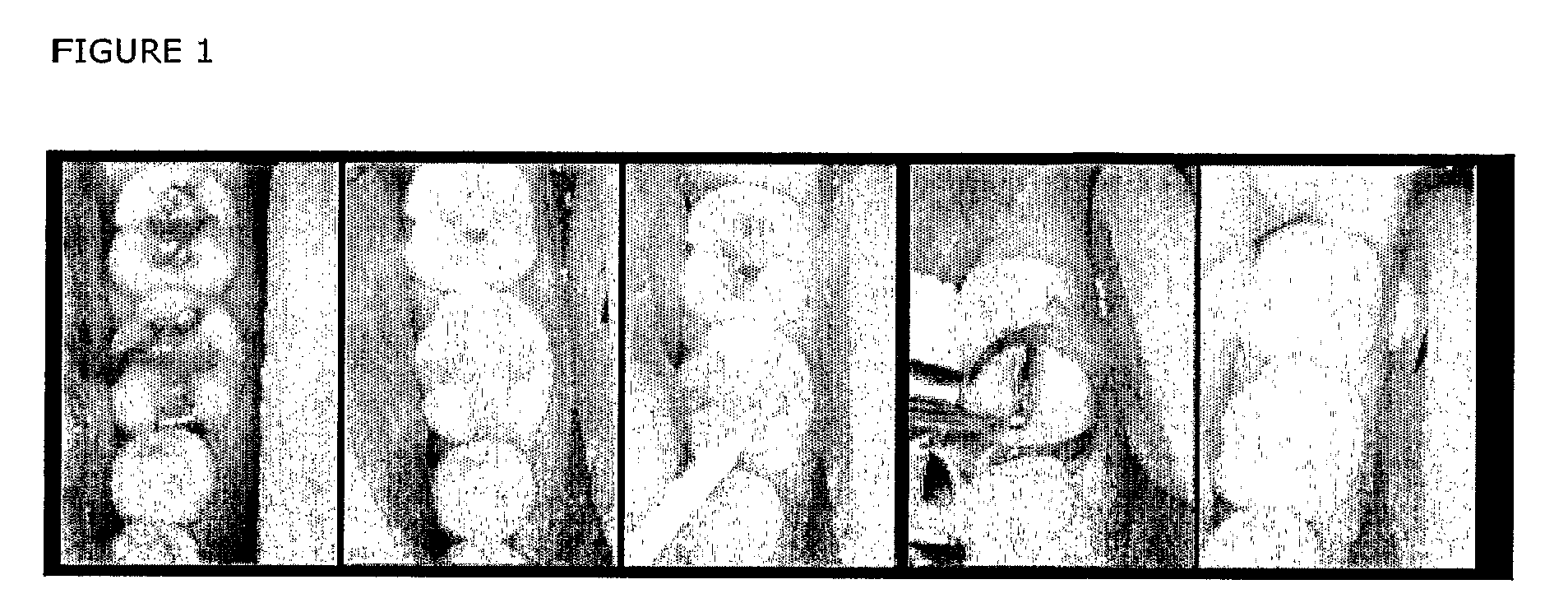Ultrasonic Curing of Dental Filling Materials
a technology of dental filling and ultrasonic curing, which is applied in the field of composite materials, can solve the problems of secondary caries or discoloration of plastic filling, rise to shrinkage, and small cracks between teeth and fillings
- Summary
- Abstract
- Description
- Claims
- Application Information
AI Technical Summary
Benefits of technology
Problems solved by technology
Method used
Image
Examples
embodiments
[0145]In order to obtain zirconia particles that could undergo a fast phase transformation, a large surface area, e.g. 10-250 m2 / g or even better 50-200 m2 / g, of the particles is preferred and also obtainable by the means described herein.
[0146]Thus, a further aspect of the present invention relates to a population of zirconia particles having an average particle size in the range of 50-2000 nm and a BET surface area of in the range of 10-250 m2 / g, said particles being present in a metastable first phase and being able to undergo a martensitic transformation to a stable second phase.
[0147]Preferably, this population of zirconia particles allows for a martensitic transformation to be effected to an extent of at least 80% within 300 sec when tested in the “Zirconia Particle Transformation Test” defined herein.
[0148]As mentioned above, the average particle size is typically in the range of 50-2000 nm, such as in the range of 50-1000 nm, in particular 100-600 nm.
[0149]Although the parti...
example 1
Tetragonal Nano-Sized Zirconia
[0203]A method of making the tetragonal nano-sized zirconia (ZrO2) is described in the following. A solution of 0.5 M ZrOCl2 was made from ZrOCl2.8H2O and pure water. The amorphous zirconia ZrOx(OH)4−2x is precipitated with 1.5 M NH3 at a constant pH of 10. The mixture was left with magnetic stirring for 10 days. The precipitate was then washed with pure water and the filter cake was then heated to 120° C. overnight. The cake was then ground to a fine white powder and put in an oven with dry atmosphere at 450° C.
example 2
Tetragonal Nano-Sized Zirconia
[0204]A method of making the tetragonal nano-sized zirconia (ZrO2) is described in the following. A solution of 0.5 M ZrOCl2 is made from ZrOCl2.8H2O and pure water. The amorphous zirconia ZrOx(OH)4−2x is precipitated with 1.5 M NH3 at a constant pH of 8.5. The mixture is left with mechanical stirring for 10 days. The precipitate is then washed with pure water until no chloride ions was detected and finally with 96% ethanol. The filter cake is then dried in an oven 60° C. overnight. The cake is then ground to a fine white powder. To obtain particles, that can undergo a fast phase transformation, a large surface area e.g. 250-550 m2 / g better 350-550 m2 / g of the powder is preferred. The powder is then heated in an oven with dry atmosphere for 2 h. with a ramp of 4 h. to the temperature of the crystal formation temperature (460° C. for this batch) of the amorphous zirconia powder. The crystal formation temperature is determined by DSC of the amorphous zirc...
PUM
| Property | Measurement | Unit |
|---|---|---|
| volumetric shrinkage | aaaaa | aaaaa |
| particle size | aaaaa | aaaaa |
| crystal domain sizes | aaaaa | aaaaa |
Abstract
Description
Claims
Application Information
 Login to View More
Login to View More - R&D
- Intellectual Property
- Life Sciences
- Materials
- Tech Scout
- Unparalleled Data Quality
- Higher Quality Content
- 60% Fewer Hallucinations
Browse by: Latest US Patents, China's latest patents, Technical Efficacy Thesaurus, Application Domain, Technology Topic, Popular Technical Reports.
© 2025 PatSnap. All rights reserved.Legal|Privacy policy|Modern Slavery Act Transparency Statement|Sitemap|About US| Contact US: help@patsnap.com


